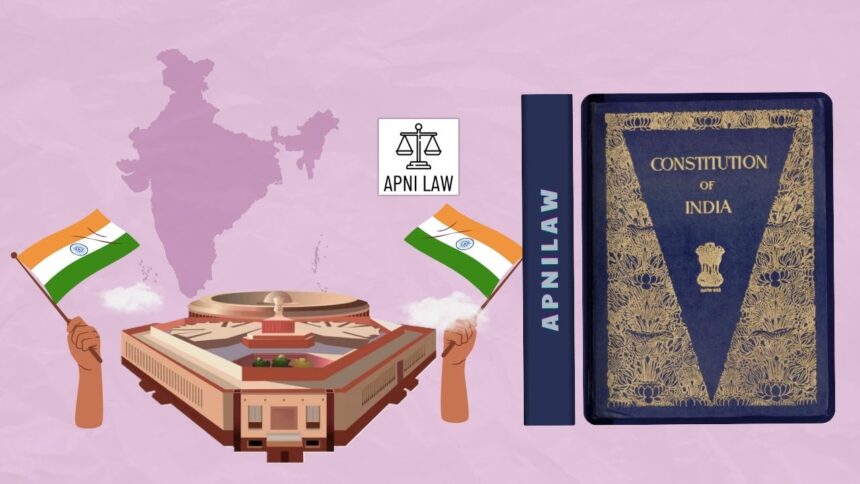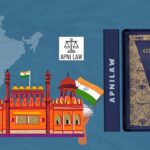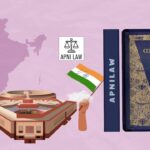Article 353 of the Indian Constitution explains what happens when a Proclamation of Emergency is declared. It defines how powers shift between the Union and the States during emergencies. The Article ensures that the Central Government can take swift and coordinated action to protect the nation during crises such as war, external aggression, or armed rebellion.
What Is the Purpose of Article 353?
The main purpose of Article 353 is to provide the Union Government with greater authority to manage the country effectively during an emergency. It ensures that administrative, legislative, and security decisions are taken promptly without conflict between the Centre and the States. This temporary shift in power allows the government to respond efficiently to threats against India’s sovereignty and stability.
How Does Article 353 Expand Executive Power?
During an emergency, the executive power of the Union expands beyond normal limits. The Central Government can give binding directions to any State regarding how it should exercise its executive power. This means the Centre can control State actions to ensure uniform implementation of national policies. The goal is to maintain coordination and order across the entire nation when normal governance might otherwise be disrupted.
How Does Article 353 Expand Legislative Power?
Article 353 also extends the legislative power of Parliament. Under normal conditions, Parliament can make laws only on subjects in the Union List. However, during an emergency, it can legislate on subjects in the State List as well. This shift allows Parliament to make laws on any matter it deems necessary for the safety and unity of the country. Even Union officials can be given duties related to these State matters, ensuring that the entire government works under one command.
Does Article 353 Apply Only to Areas Under Emergency?
The scope of Article 353 is not limited to regions directly affected by an emergency. If an emergency is declared in a specific part of India, the expanded powers of the Centre may extend to other areas too, if required for national security. This ensures that preventive and protective measures can be taken across the country, even if the crisis originates in a limited region.
How Does Article 353 Affect the Federal Balance?
Article 353 temporarily changes the federal structure of India. During an emergency, the Union becomes dominant, and the States are required to follow its directions. This centralization ensures quick decision-making and consistent policy enforcement. However, it also reduces State autonomy for the duration of the emergency. Once the situation normalizes, the original federal balance is restored, and States regain their legislative and executive powers.
Why Is Article 353 Necessary for National Security?
Article 353 ensures that national defense and public order are managed under a single authority during a crisis. In situations like war or rebellion, divided powers could cause delays or confusion. By granting the Union full control, the Article guarantees that responses to emergencies are coordinated and effective. It strengthens India’s ability to protect its citizens and maintain sovereignty in challenging times.
What Are the Judicial Safeguards Under Article 353?
Although the Centre gains extraordinary powers during an emergency, the judiciary continues to act as a constitutional guardian. Courts can review the legality of the proclamation and its implementation. The Supreme Court has emphasized that these powers must be used only in genuine emergencies and not for political advantage. Landmark cases such as ADM Jabalpur v. Shivkant Shukla (1976) and Minerva Mills v. Union of India (1980) discussed the limits and accountability of emergency powers, ensuring that constitutional rights are not permanently suspended.
How Is Article 353 Connected to Other Emergency Provisions?
Article 353 works in close connection with other provisions of Part XVIII of the Constitution. Article 352 allows the President to declare a National Emergency. Moreover, Article 356 deals with the failure of constitutional machinery in States, leading to President’s Rule. In addition to this, Article 357 allows Parliament to delegate legislative powers during emergencies. Article 360 empowers the President to declare a Financial Emergency. Together, these articles form a framework that ensures governance continuity when India faces grave threats.
What Are the Practical Implications of Article 353?
In practice, Article 353 allows the Central Government to take direct control over policy, law, and administration across the country. It enables Parliament to pass urgent laws, allocate resources, and deploy forces efficiently. The Centre can guide State governments to act in a unified way. This results in faster coordination and a consistent national strategy. However, it also raises concerns about the erosion of State power if used for extended periods.
How Does Article 353 Balance Power and Accountability?
While Article 353 centralizes authority, it still operates within constitutional limits. The expansion of Union power is temporary and subject to judicial review. Once the emergency is lifted, the system reverts to its normal federal structure. This balance ensures that India remains both strong during crises and democratic in spirit. The Article’s design reflects the Constitution’s intent to protect the nation without compromising long-term federal integrity.
What Is the Long-Term Significance of Article 353?
Article 353 has both historical and practical importance. It highlights the flexibility of the Indian Constitution to adapt to emergencies while preserving its democratic framework. It ensures that no part of the country is left unprotected during crises and that the Union can act decisively when needed. At the same time, it reaffirms that extraordinary powers must return to normal limits once the emergency ends.
For any specific query call at +91 – 8569843472
Conclusion
Article 353 stands as one of the most powerful yet balanced provisions in the Indian Constitution. It allows the Union Government to centralize control, expand legislative reach, and direct State actions during emergencies. These powers safeguard national unity, defense, and public order when the nation faces serious threats. However, judicial review and constitutional safeguards prevent their misuse. When the emergency ends, normal federal relations resume, ensuring that India’s democracy and constitutional balance remain intact








